Congenital Melanocytic Nevus Syndrome
Congenital melanocytic nevus syndrome. These lesions may or may not be hairy. These lesions may or may not be hairy. Giant congenital melanocytic naevus.
Congenital melanocytic nevi are associated with neuromelanosis the presence of melanin-producing cells within the brain parenchyma or leptomeninges. The role of surgery in the management of congenital melanocytic naevi in children. Congenital melanocytic nevus CMN syndrome is the association of pigmented melanocytic nevi with extra-cutaneous features classically melanotic cells within the central nervous system most frequently caused by a mutation of NRAS codon 61.
A congenital melanocytic naevus American spelling nevus is a proliferation of benign melanocytes that are present at birth or develop shortly after birth. A perspective from Great Ormond Street Hospital. In about 5 to 10 of the cases the giant congenital nevus is associated withneurocutaneous melanocytosisexcess pigment cells in the brain or spinal cord and is characterized by neurological symptoms.
Giant congenital melanocytic nevus is a skin condition characterized by an abnormally dark noncancerous skin patch nevus that is composed of pigment-producing cells called melanocytes. Congenital melanocytic nevus syndrome CMNS is the result of an abnormal proliferation of melanocytes in the skin and central nervous system caused by progenitor-cell mutations during embryonic development. These may be in the form of congenital melanocytic nevi CMN spitz nevus or sebaceous nevus.
A syndrome characterized by congenital pigmentary skin lesions which can occur at any site and can cover most of the body surface. The older term Neurocutaneous melanosis the association of CMN on the skin and a subset of congenital neurological disease is no longer favoured as many other associations are now recognised. This form of a congenital naevus is also known as a brown birthmark.
Mutations in the NRAS gene have been detected in many of these cells. Congenital melanocytic nevi congenital melanocytic nevi syndrome genetic mutations melanoma neurocutaneous melanosis Search for Similar Articles You may search for similar articles that contain these same keywords or you may modify the. Congenital melanocytic nevus syndrome is characterized by pigmentary skin defects apparent at birth.
The objective of this study was to test our clinical observation that children with CMN show more facial similarities than might be expected by coincidence. It is present from birth congenital or is noticeable soon after birth.
Congenital nevi fall under the umbrella of pigmented lesions.
These lesions may or may not be hairy. A congenital melanocytic naevus American spelling nevus is a proliferation of benign melanocytes that are present at birth or develop shortly after birth. It is present from birth congenital or is noticeable soon after birth. Congenital nevi fall under the umbrella of pigmented lesions. They are found in 1 to 6 of newborn. Most individuals have 1 or more large or giant lesions greater than 20 cm and up to over 60 cm in diameter which may cover up to 80 of total body area. Congenital melanocytic nevi are associated with neuromelanosis the presence of melanin-producing cells within the brain parenchyma or leptomeninges. In about 5 to 10 of the cases the giant congenital nevus is associated withneurocutaneous melanocytosisexcess pigment cells in the brain or spinal cord and is characterized by neurological symptoms. This form of a congenital naevus is also known as a brown birthmark.
Most individuals have 1 or more large or giant lesions greater than 20 cm and up to over 60 cm in diameter which may cover up to 80 of total body area. Congenital melanocytic nevus syndrome is characterized by pigmentary skin defects apparent at birth. Most individuals have 1 or more large or giant lesions greater than 20 cm and up to over 60 cm in diameter which may cover up to 80 of total body area. It affects approximately 50 percent of individuals with Proteus syndrome and is usually of a soft and velvety texture. In about 5 to 10 of the cases the giant congenital nevus is associated withneurocutaneous melanocytosisexcess pigment cells in the brain or spinal cord and is characterized by neurological symptoms. Congenital melanocytic nevus CMN syndrome is the association of pigmented melanocytic nevi with extra-cutaneous features classically melanotic cells within the central nervous system most frequently caused by a mutation of NRAS codon 61. What is a congenital melanocytic naevus.
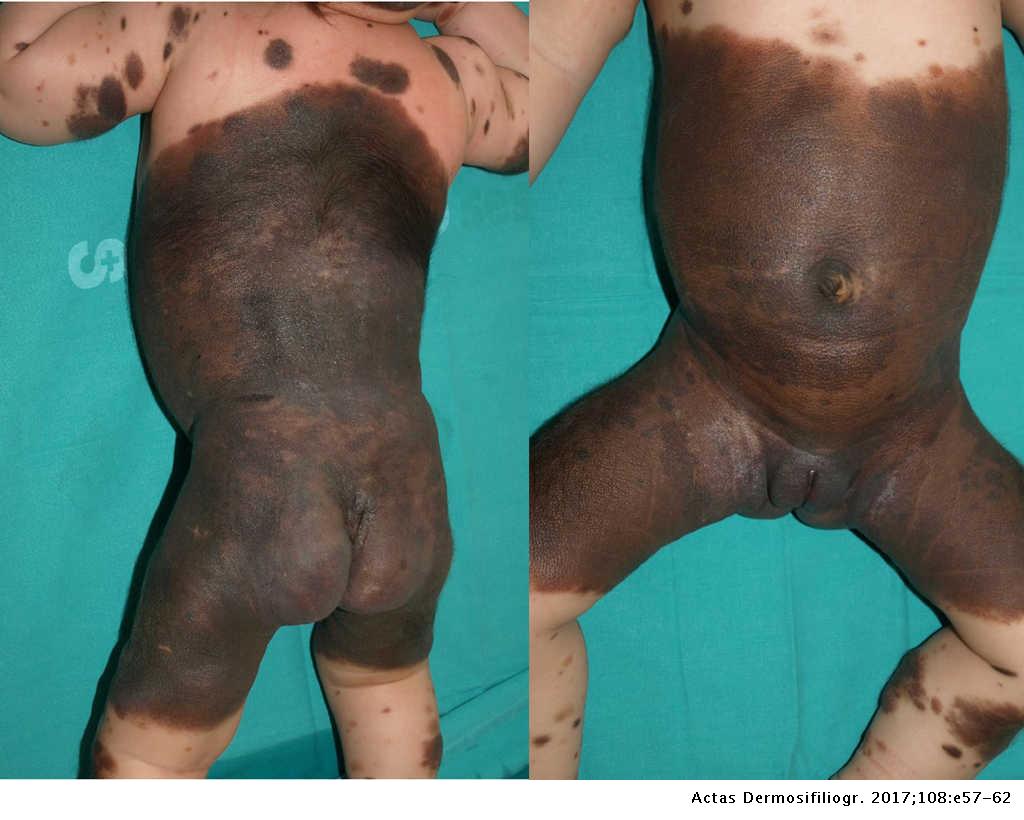




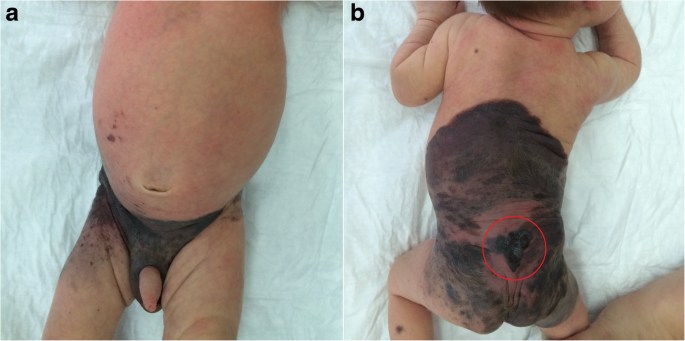




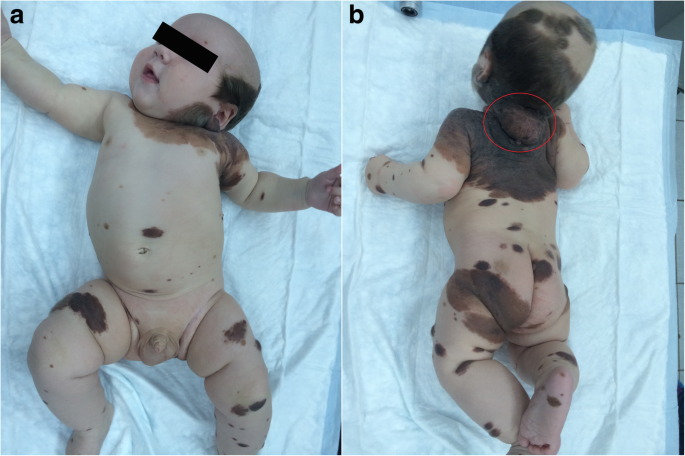





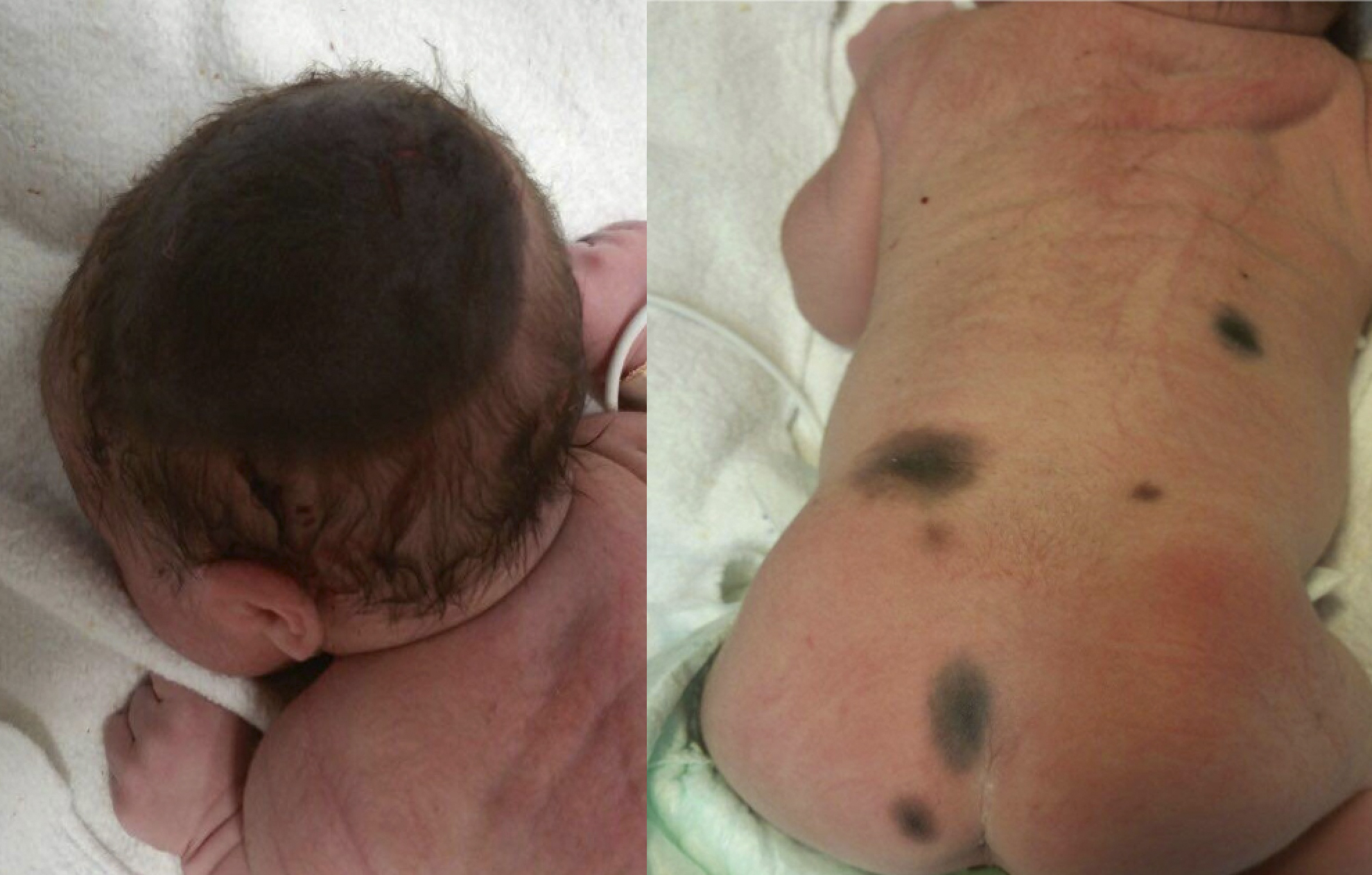













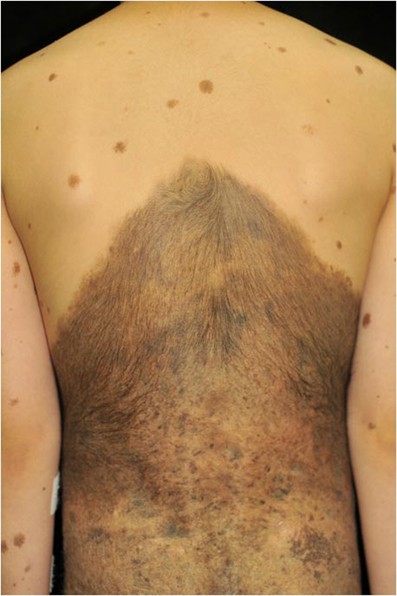

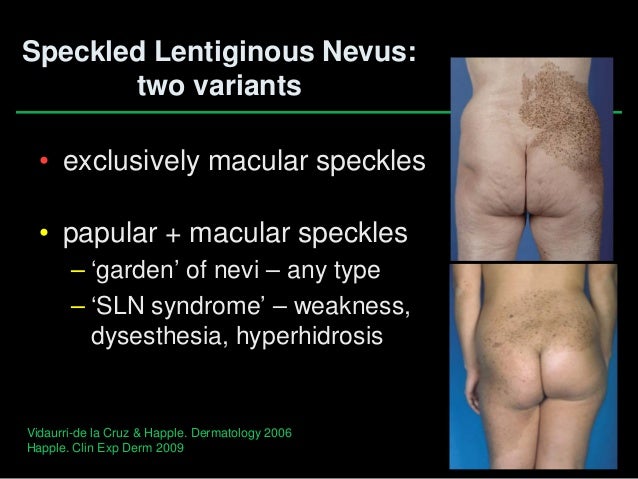







Post a Comment for "Congenital Melanocytic Nevus Syndrome"